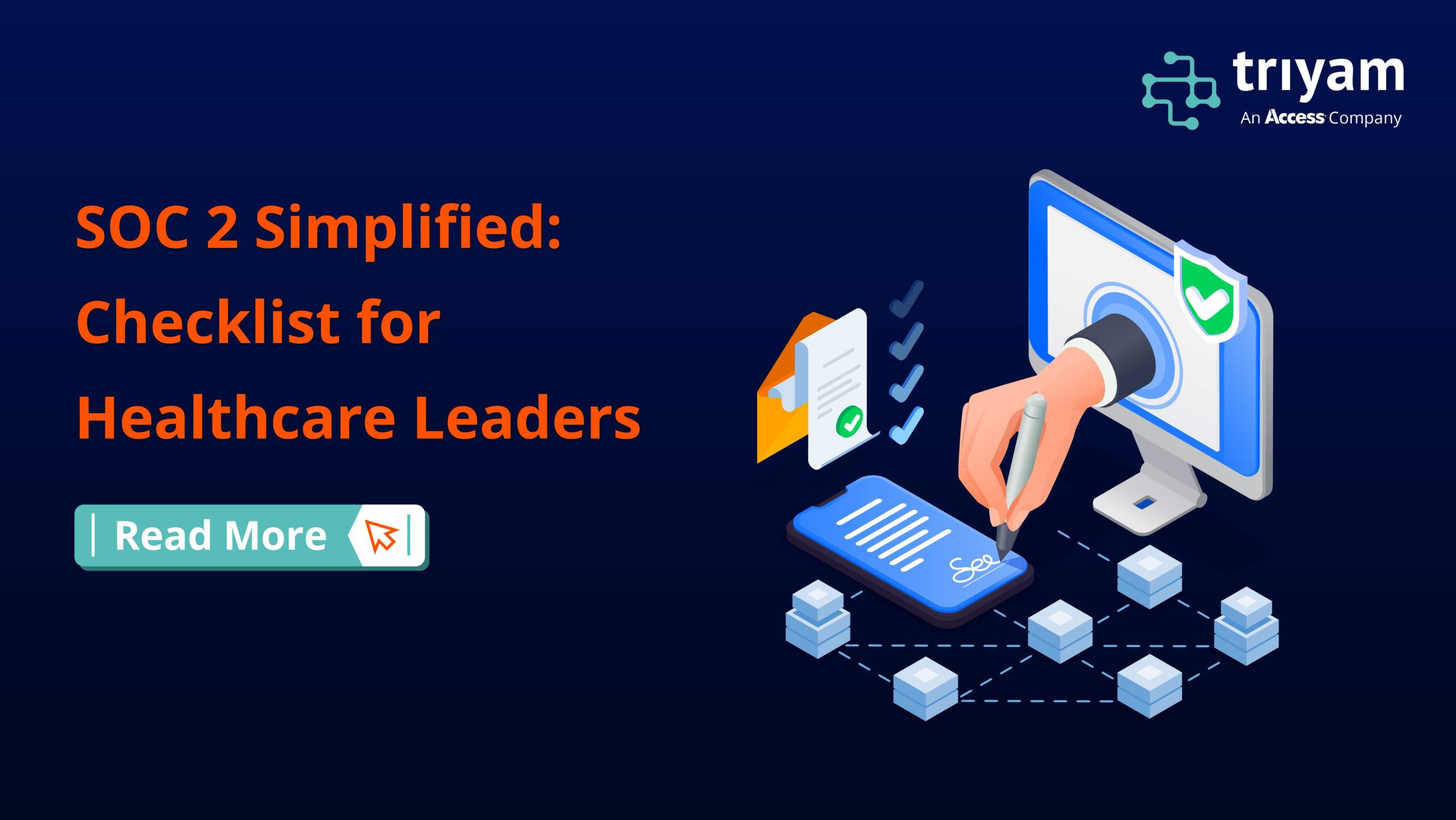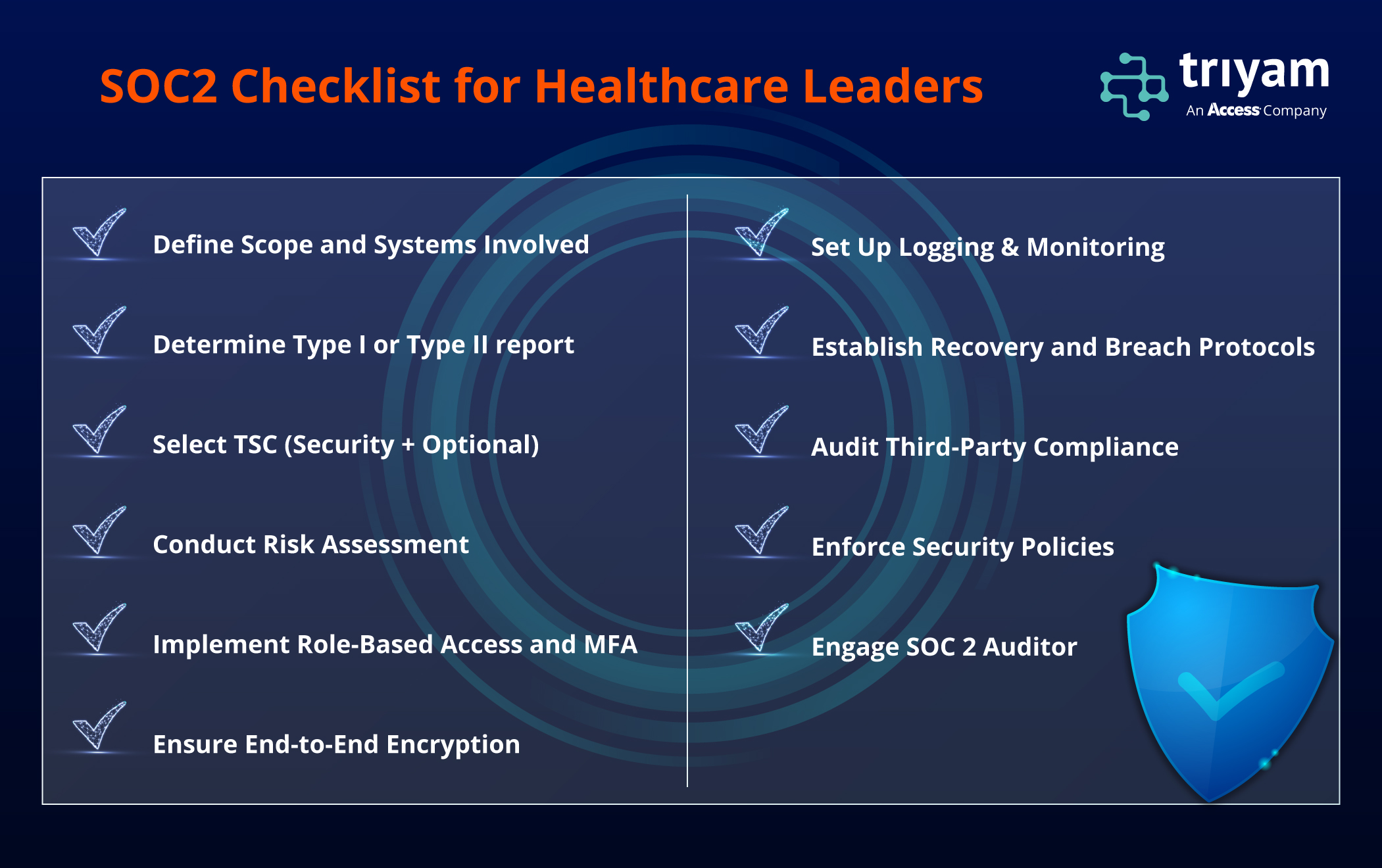73% of healthcare CIOs were not sure about vendors without SOC 2 or equivalent security attestations. Gartner Security & Risk Survey (2023) found that vendors notably delayed onboarding by 3-6 months before SOC2 certification.
SOC 2 (System and Organization Controls 2) is a holistic auditing framework developed by the American Institute of Certified Public Accountants (AICPA) to ensure secure and compliant data governance. Although not mandatory, SOC2 certification adds credibility to organizational services, especially tech tools, cloud solutions, audit reports and handling EHR/EMR data in healthcare data archival solutions.
There are 5 trust service criteria:
- Security (required) – Protects systems against unauthorized access, breaches, and data loss through controls like firewalls, access restrictions, and encryption.
- Availability: Ensures systems are operational and accessible as agreed, with measures for uptime, failover, and disaster recovery.
- Confidentiality: Safeguards sensitive data (like PHI) from unauthorized disclosure using access controls, encryption, and secure data storage.
- Processing Integrity: Ensures system processing is accurate, complete, and timely—critical for functions like lab results or billing data in EHRs.
- Privacy: Focuses on the proper collection, use, retention, and disposal of personal information in line with privacy practices and regulations.
Why does SOC 2 matter?
- Builds trust
- Amplifies risk management
- Accelerates onboarding and approvals
- Checks non-compliance
- Competitive integrity
To ensure you navigate the SOC 2 margins smoothly, Triyam recognizes the following key steps to note:
- Define Objectives (“Why”): Identify the purpose of the SOC 2 report and set clear objectives along with integrated systems and departments.
- Choose the Relevant SOC 2 Trust Services Criteria (TSC): Security is mandatory. Availability guarantees uptime. Confidentiality protects PHI. Processing Integrity for accuracy of EHR/EMR data flows. Privacy to abide by HIPAA.
- Identify Type I/II Audit: Identify if you need Type I (evaluates design of controls at a point in time) or Type II (evaluates effectiveness of controls over time, e.g. 6-12 months) audit with a strong SOC-HIPAA interplay.
- Map HIPAA & SOC 2 Overlap: Check if HIPAA controls map to SOC 2 such as Security & Confidentiality criteria.
- Conduct a Risk Assessment: Identify data vulnerabilities, access gaps, and incident response readiness.
- Implement Access Controls: Limit access only to data that is required, enable role-based access (RBAC) for EHR systems, patient portals, and admin consoles.
- Monitor & Log Round the Clock: Set up logging for system access, modifications, user activity and administrative activity.
- Strengthen Third-Party Management: Ensure strong BAAs and SOC reports for EHR vendors, hosts, and data processors. Review compliance regularly.
- Enforce Security Policies: Have clear, accessible documentation data encryption, incident response, backup & disaster recovery and communication channels.
- Conduct Internal Readiness Audits: Conduct an internal check to reduce the cost, time, and friction during your formal audit.
Talk to Triyam, an SOC2-certified Access company!


